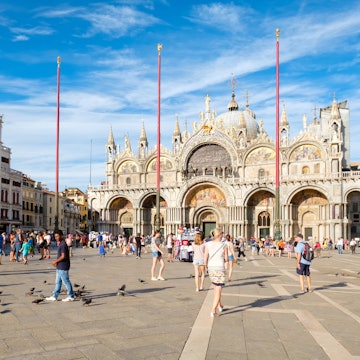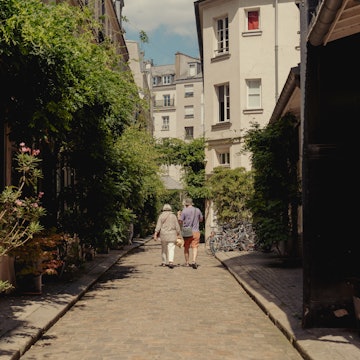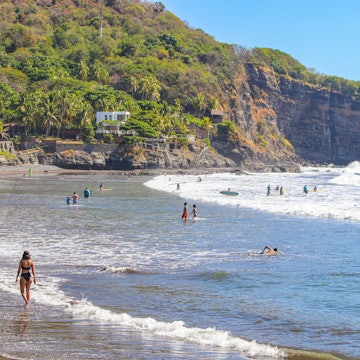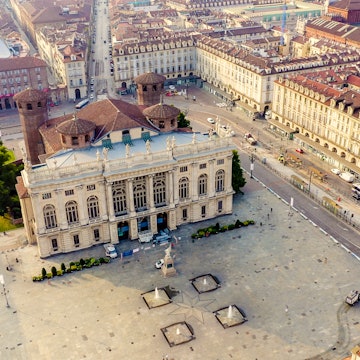

Trieste’s Grand Canal. Freesurf/Adobe Stock
Tucked up against the borders of Austria and Slovenia, Friuli Venezia Giulia is not only one of Italy’s hardest-to-pronounce regions, but one of its least-visited.
Far removed from the crowds that throng Florence, Rome and Venice, the region can sometimes feel like a different country thanks to its geographical position and history (it was part of the Austro-Hungarian Empire until 1866). Yet Friuli Venezia Giulia is indeed uniquely Italian, a place that relishes its status as an lesser-known underdog, and one that packs a powerful cultural and culinary punch.
The region’s seaside capital, Trieste, is a vibrant crossroads famed for its coffee, architecture and literary history. And the city’s many-cultured personality sets the tone for the region. An award-winning wine region of which even many Italians have never heard, Il Collio abuts Slovenia’s equally dazzling Brda region. History comes alive at Cividale del Friuli, a one time center of Lombard culture, and Aquileia, home to amazing Roman artworks. While the region’s historic capital of Udine has lost its administrative status, the Renaissance-Venetian city has found its footing as a culinary capital. It’s a wonderful spot to take in Fruili’s hearty regional fare – and one of Italy’s least known but most delicious gastronomic destinations.
Here’s all you need to know about Friuli Venezia Giulia.

When should I go to Friuli Venezia Giulia?
The region’s under-the-radar status makes Friuli Venezia Giulia a year-round prospect – you’re never going to be overwhelmed by crowds as you might in Tuscany or Campania – though the weather does vary throughout the year. Trieste sees its peak visitor numbers during October’s Barcolana Regatta, a renowned, very well attended international sailing race, while ski season in the Carnic Alps and Julian Alps lasts from December to April. The weather is most welcoming during Italy’s traditional high season, from May to September, with average highs between 22°C (72°F) and 28° (82°F).
How much time should I spend in Friuli Venezia Giulia?
Friuli Venezia Giulia is one of Italy’s smallest regions, so you won’t have to spend much time getting from place to place. If you want time for the grand tour, give yourself a week and divide your time between Trieste, Udine and Il Collio. You can reach Cividale del Friuli, Aquileia, Palmanova and Spilimbergo on half-day excursions from Trieste or Udine. Il Collio is a bit further afield and a wonderful place to hole up for an extended stay, as you savor wonderful wines and cross-cultural culinary adventures. Of course, there’s the sea to consider as well, with popular resorts hugging La Costiera Triestina and Grado.

Is it easy to get in and around Friuli Venezia Giulia?
While the region isn’t Italy’s best-connected for train travel (one of the reasons why those tourism numbers skew lower), the relatively short distances between cities and attractions make it an ideal area for a road trip. Trains do connect Trieste with Cervignano–Aquileia–Grado as well as Udine, Gorizia and Venice; buses fill in the gaps quite nicely. But there’s no substitute for having your own set of wheels, especially to leisurely explore Il Collio.
Top things to do in Friuli Venezia Giulia
The region has everything – seaside resorts, ancient ruins, rolling vineyard-covered hills, incredible food and culture… – but a surplus of visitors. As you relish its off-the-beaten-path cred, expect surprises.

Learn about Lombard culture in Cividale del Friuli
The pretty riverside town of Cividale del Friuli, 74km (46 miles) north of Trieste, hides one of Europe’s most unique treasures. Constructed in the 8th century, the Tempietto Longobardo (also known as the Oratorio of Santa Maria in Valle) is unlike any other chapel you’re likely to have laid eyes on. Once attached to the palace that housed the representative of the Lombard king, it was eventually converted into a Benedictine monastery, and today stands as Europe’s principal example of Lombard architecture.
Highlights include extremely rare 8th-century Greek-Byzantine frescoes and haunting, wildly realistic high relief sculptures of saints in stucco. The nave is small and intimate, adding to a feeling that the saints are closing in on you. If you’re of the “seen one European church, seen ‘em all” persuasion, prepare for a course correction.
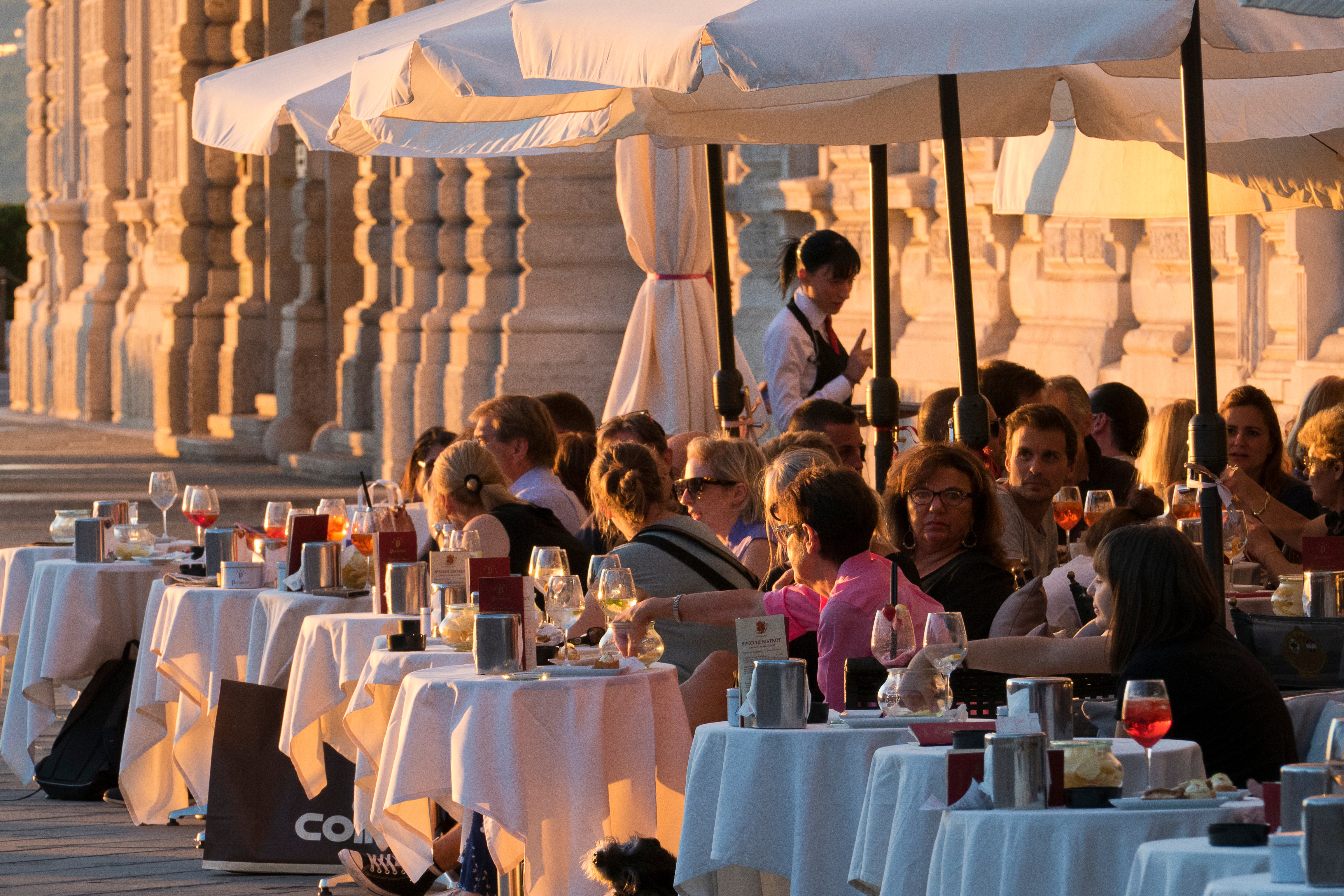
Sip your way through Trieste, where one of Italy’s most famous cafe cultures flourishes
Italians’ love affair with coffee is well known – yet two places take things to another level: Naples and Trieste. Home to Illy, one of Italy’s most recognized coffee brands, the latter has a coffee culture that’s unrivaled in northern Italy – and accordingly one of the country’s most pleasant spots for a quick pick-me up. The city even has its language for coffee. Sure, you can order an espresso – but that’s a dead giveaway that you’re not a born-and-raised triestino, for locals order nero (espresso), capo (macchiato), caffe latte (cappuccino), goccia (espresso with a drop of frothed milk) and so on.
But the great coffee and local vernacular is only half the fun. The other half is down to the city’s historic 19th-century cafes, which are preserved-in-time throwbacks to an earlier era. Caffè degli Specchi, the ultimate front-row seat on central Piazza dell’Unità, dates to 1839 and features an original ceiling fresco and a few antique mirrors that managed to evade WWII bombs. Virtually unchanged since its 1830 opening, Caffè Tommaseo dazzles with its richly decorated stucco ceiling reliefs, primrose-yellow walls, lion-footed tables and Viennese mirrors. Antico Caffè San Marco, once the stomping grounds of such literary greats as James Joyce, Italo Svevo and Umberto Saba, was destroyed in WWII, but retains its original ornate balcony, coffee-leaf-themed gilt and theatrical mask paintings that once covered the male nudes above them. And those are just three of many.

Savor the flavors of Friuli in culinary capital Udine
Friulian gastronomy is rich in flavor and heritage, a mix of Austro-Hungarian, Slovenian and Venetian influences that have created some of Italy’s most obscure – but heartiest and tastiest – specialties. The region is beloved throughout Italy and worldwide for prosciutto di San Daniele, one of the country’s two most coveted hams (the other is prosciutto di Parma). But that doesn’t even scratch the surface of the cast-iron.
Udine is the undisputed center of cucina friulana. As you comb this wealthy provincial city’s Veneto-evoking streets, regional specialties abound. Country-style cheeses (smoked ricotta and Montasio), sausages with savoy cabbage or toc’ in braide (a bed of soft polenta topped with a cheese fondue), cjarsons (savory-sweet stuffed pasta), salami cooked with vinegar (salame all’aceto), frico (fried cheese) and brut brustulat (a soup made from boiled potatoes and flour toasted in butter) are just a few of the standouts, all of which pair excellently with crisp and crunchy Friulian wines. Sample it all at such outstanding restaurants as Vitello d'Oro, Al Vecchio Stallo, Trattoria Ai Frati and Osteria Al Marinaio. It’s hard to eat anything mediocre in Udine.

Be dazzled by the extraordinary Roman mosaics at little-visited Aquileia
On the other side of the country from over-touristed sites like Pompeii and the Roman Forum, Aquileia, 51km (32 miles) northwest of Trieste, is unknown to even most Italians. Which is a pity, since the Basilica di Santa Maria Assunta contains one of the most astonishing traces of the Roman Empire you’ll find anywhere. On the floor of the 4th-century structure, a 760-sq-m (8180-sq-ft) mosaic on the floor depicts a huge range of decorative motifs, portraits and allegorical figures that defy easy interpretation. This tiled masterpiece is one of Italy’s most mind-blowing works of art.

My favorite thing to do in Friuli Venezia Giulia
Since I love crossing borders (I’m a travel journalist, after all), the binational wine region of Il Collio holds endless fascination. Besides being relentlessly gorgeous, the region’s wonderful white wines (Malvasia, Ribolla Gialla, Friulano) are outstanding, affordably priced and sometimes crafted from grapes whose vines grow on both sides of the border. (The reds aren’t too shabby, either). I trust anything winemakers Ilaria Felluga (Russiz Superiore) or Robert Princic (Gradis’ciutta) put in a bottle. The food, a unique Italo-Slovenian fusion, is hearty and gamey, almost designed to pair with wines. The best meal I have ever had in Italy was here, at L’Argine a Vencò; Osteria La Preda is a wonderful gastronomic adventure as well. Given that the area is all but unknown to travel and wine enthusiasts, it’s the kind of place I gravitate toward. And the kind of place where Italy shines the brightest: outside the spotlight.
How much money do I need for Friuli Venezia Giulia?
Prices in Friuli Venezia Giulia are about 10–20% cheaper than the more expensive neighboring region of Trentino–Alto Adige; expect to pay as much as you would in the rest of northern Italy. For a comfortable stay in decent accommodations, dining in mid-range restaurants and an activity or two, budget roughly €150–175 (US$156–182) per day.
Double room: €85–130 (US$88–135)
Public transport ticket: €1.45 (US$1.51)
Coffee: €1.30 (US$1.35)
Dinner for two in traditional trattoria: €45–60 (US$47–62)
Bottle of Il Collio Malvasia: €10–20 (US$10.40–20.80)
Beer/pint at a brewery: €4–6 (US$4.16–6.23)








